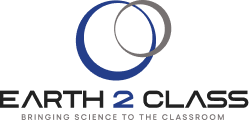“DEVELOPING STRATEGIES FOR USING RESEARCH-BASED CURRICULUM MATERIALS”
Originally presented 8 Mar 2008
Lamont scientists are “hot” commodities, so every once in a while E2C runs into a “situation” — our guest scientist for this March’s Workshop, Dr. Ajit Subramaniam, has received a wonderful opportunity to spend time at the National Science Foundation in VA.
Consequently, we use this month’s to share amongst ourselves strategies for effectively incorporating research-based activities into our classroom and curriculum. Many will come from resources that have been developed for and by E2C, while others will be drawn from AMS, NASA, NOAA, and sources suggested by you, the participants.
Click on either the “Introduction” or “Classroom Resources” for links to websites that may be of value to you or your students.
Cutting-Edge Research
Here is a link to the main page of the Lamont-Doherty Earth Observatory website, where you can find stories about recent advances in understanding our planet: http://www.ldeo.columbia.edu/
From here, you may wish to browse through:
Classroom Resources
Here, in mostly alphabetical order, are some useful links for creating interesting curricular materials that include research-based resources, However, you may wish to “bounce around,” rather than look at these in the order presented.
From the AMERICAN METEOROLOGICAL SOCIETY
AMS Education Initiatives: www.ametsoc.org/amsedu
“DataStreme Atmosphere”: www.ametsoc.org/dstreme
“DataStreme Ocean”: www.ametsoc.org/amsedu/DS-Ocean
“Water in the Earth System”: www.ametsoc.org/amsedu/wes
“Project Atmosphere Canada: http://www.smc-msc.ec.gc.ca/education/teachers_guides/index_e.html
“Project Atmosphere Australia Online”:http://www.schools.ash.org.au/paa2/
From the AMERICAN MUSEUM OF NATURAL HISTORY
http://www.amnh.org/education/
From the AMERICAN CHEMISTRY COUNCIL
http://www.americanchemistry.com/s_acc/index.asp
From the AMERICAN CHEMISTRY SOCIETY
From the DIGITAL LIBRARY FOR EARTH SYSTEM EDUCATION (DLESE)
From the ENVIRONMENTAL PROTECTION ADMINISTRATION (EPA)
http://www.epa.gov/epahome/educational.htm
From the GEOLOGICAL SOCIETY OF AMERICA (GSA)
http://www.geosociety.org/educate/resources.htm
From the NATIONAL AERONAUTICS AND SPACE AGENCY
http://education.nasa.gov/home/index.html
From the NATIONAL EARTH SCIENCE TEACHERS ASSOCATION (NESTA)
From the NATIONAL OCEANIC AND ATMOSPHERIC ADMINISTRATION (NOAA)
http://www.education.noaa.gov/
From the National Weather Service “JetStream – Online School for Weather”
http://www.srh.noaa.gov/srh/jetstream/
From the NATIONAL SCIENCE FOUNDATION
http://www.nsf.gov/discoveries/
From the NATIONAL SCIENCE TEACHERS ASSOCIATION:
From the SMITHSONIAN INSTITUTIONS
National Air and Space Museum and Udvar-Hazy Center:http://www.nasm.si.edu/
National Museum of Natural History: http://www.mnh.si.edu/
From the US GEOLOGICAL SURVEY (USGS)
From WINDOWS TO THE UNIVERSE (UCAR)
http://www.windows.ucar.edu/spanish.html
Integrating Educational Technologies
General suggestions: Integrating Educational Technologies into Your Classrooms
Your assignment:
1) What characteristics make effective as a classroom teaching tool?
2) When should be used for full-class instruction, and when should they be used for small groups or individual projects?
3) Describe strategies to locate suitable for your classes.
and
4) Design a lesson plan that incorporates at least one .
E2C Follow-up:
You may send your model lesson and other responses to this “assignment” to michael@earth2class.org. If suitable, we will post your work in the E2C lesson plans and/or add them to this section of the Workshop website.


